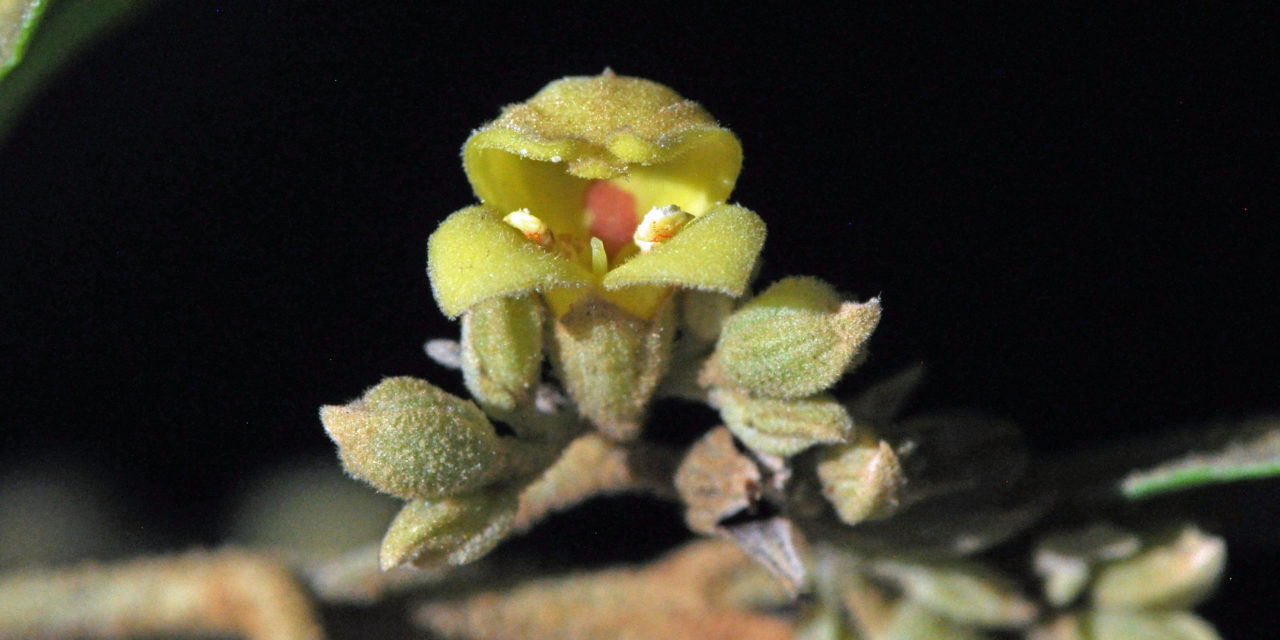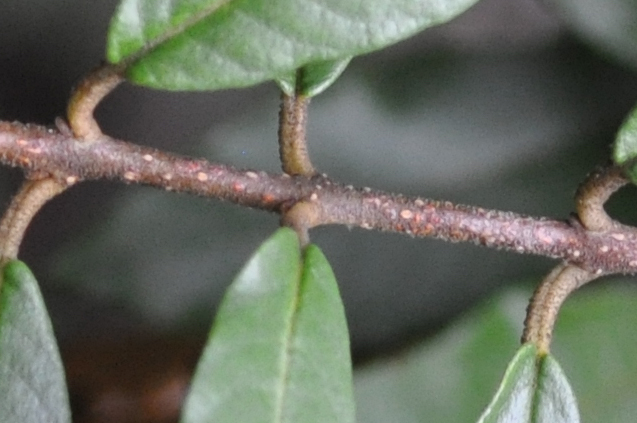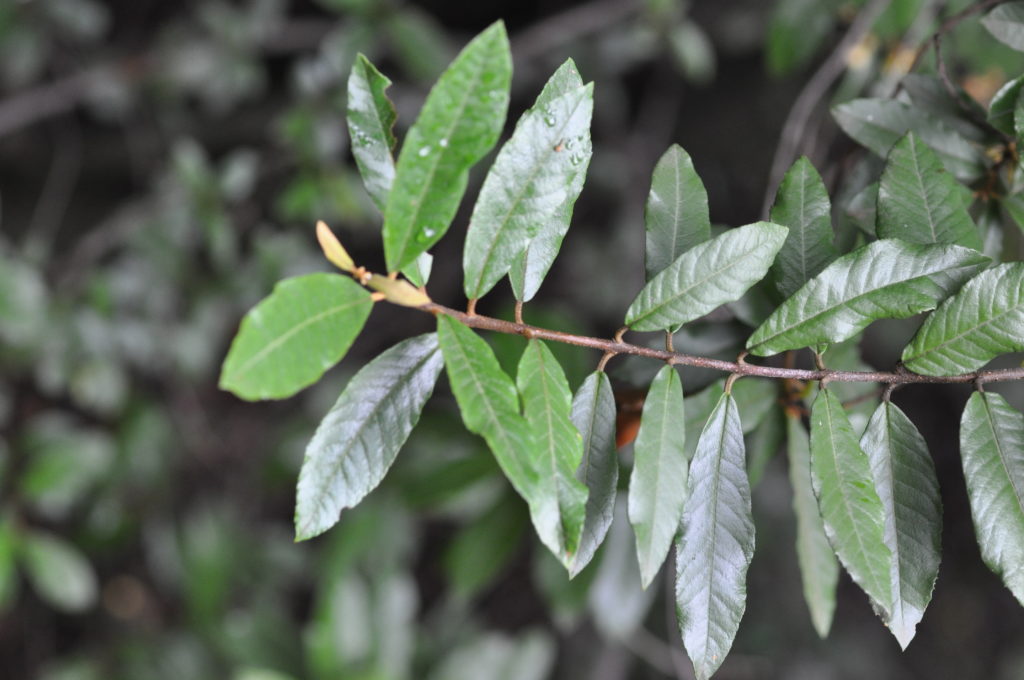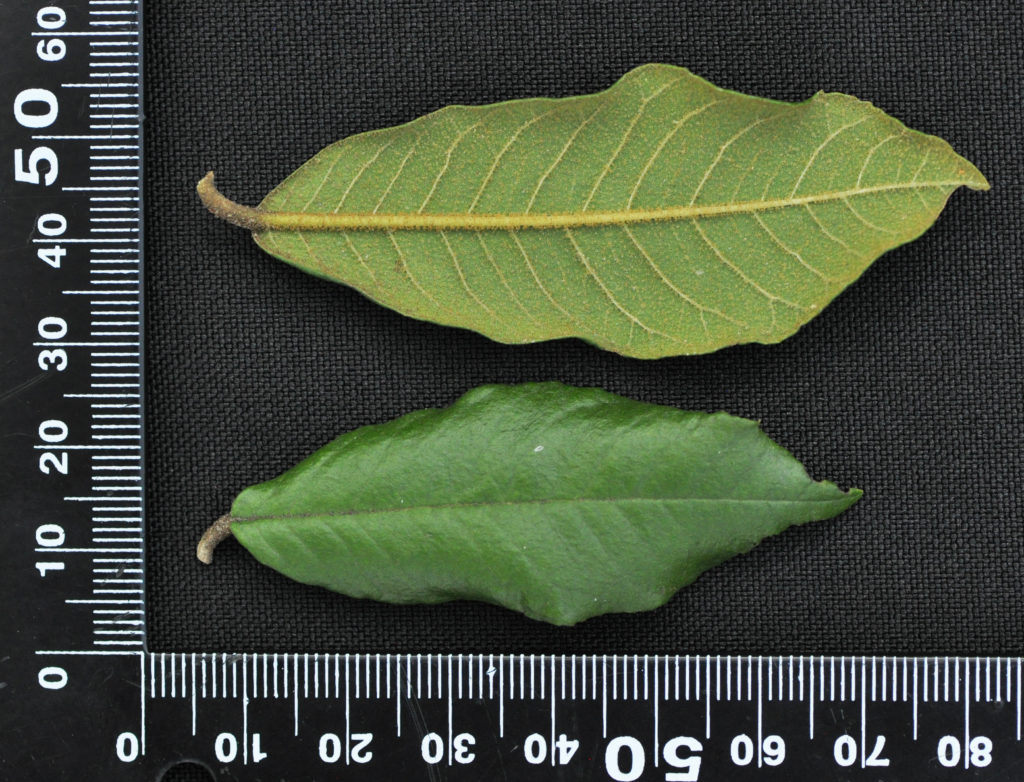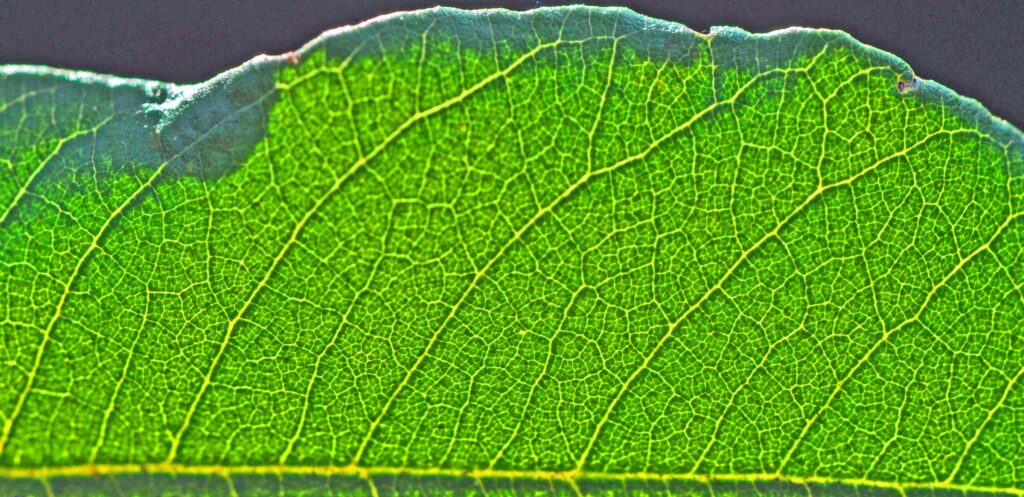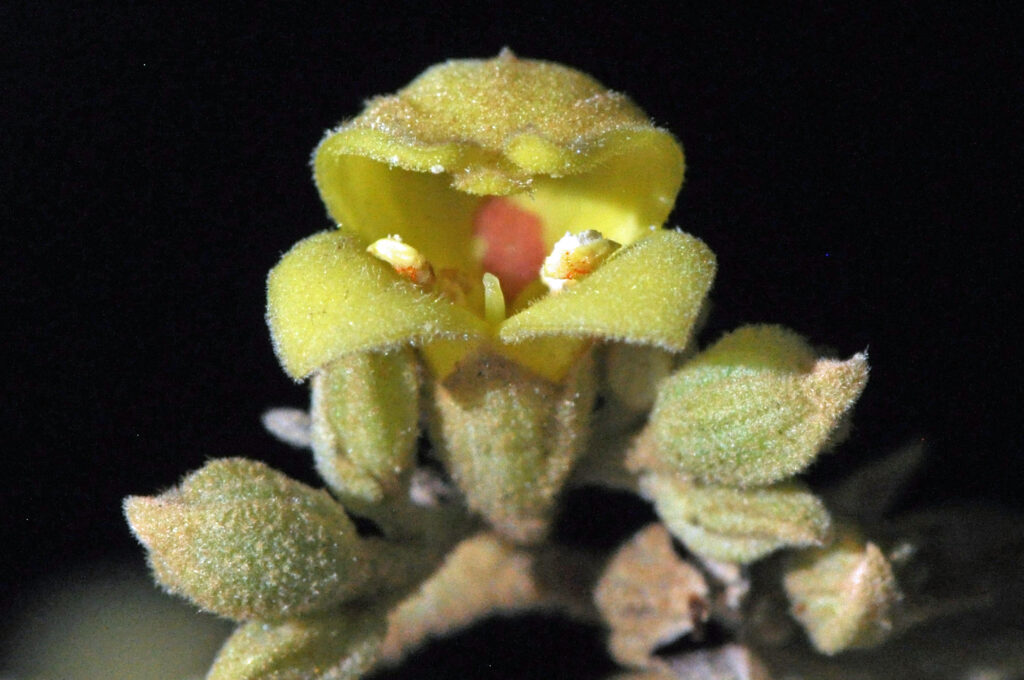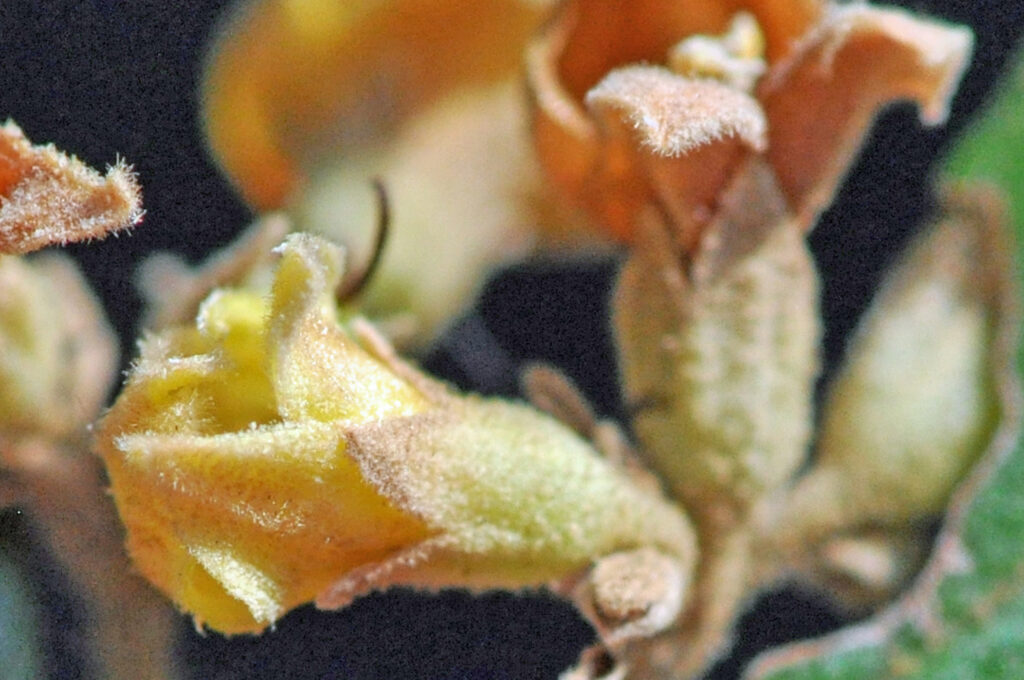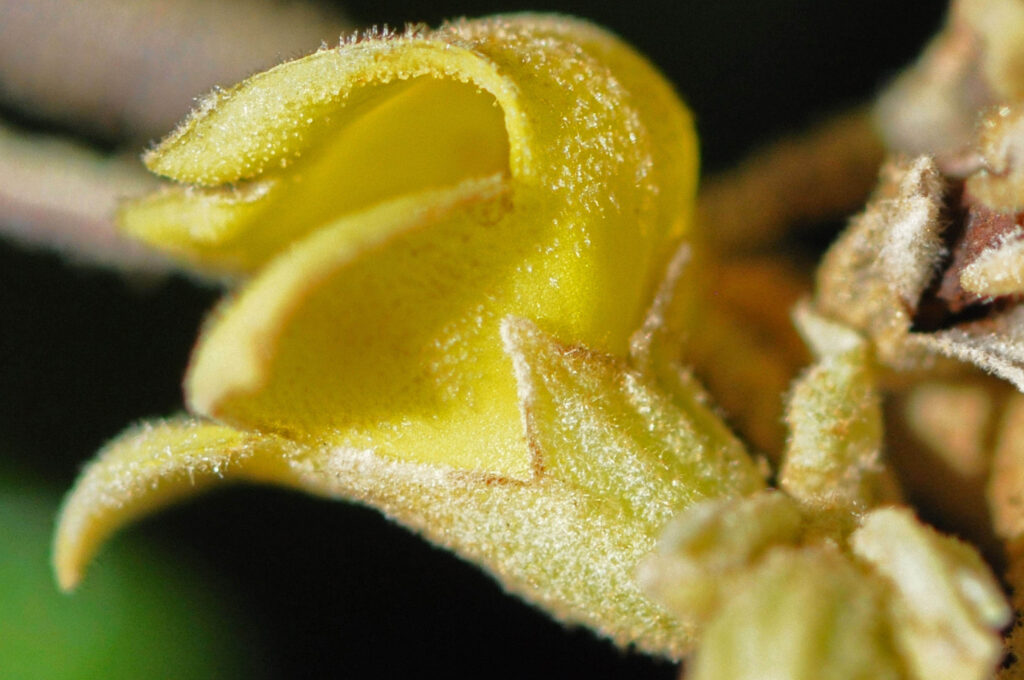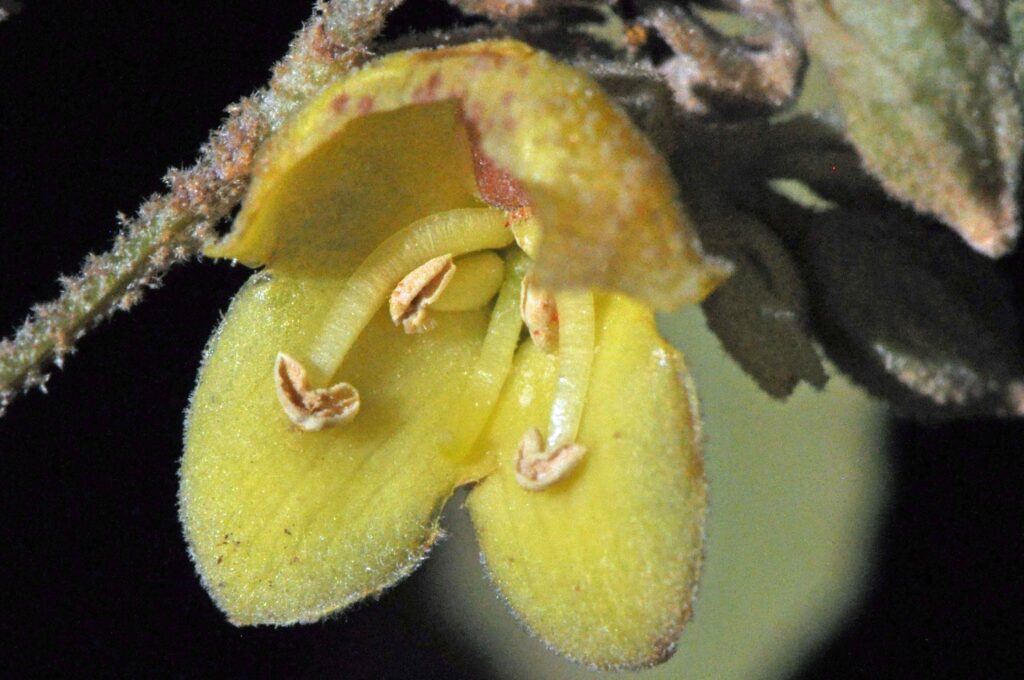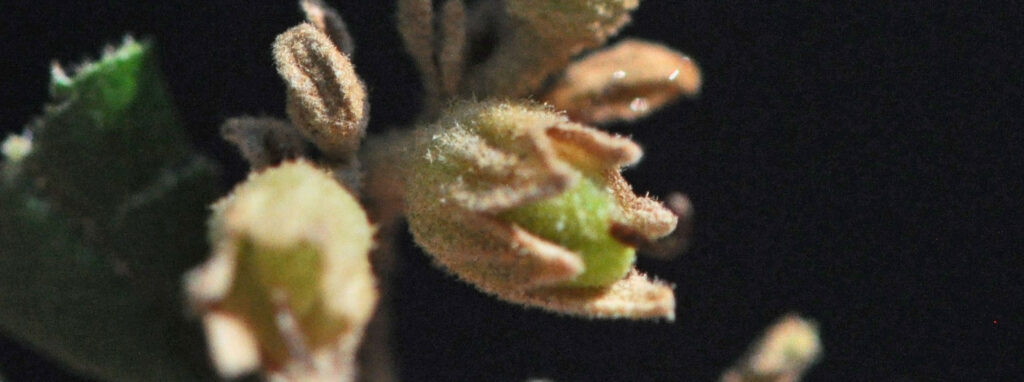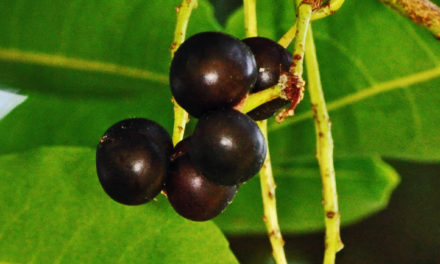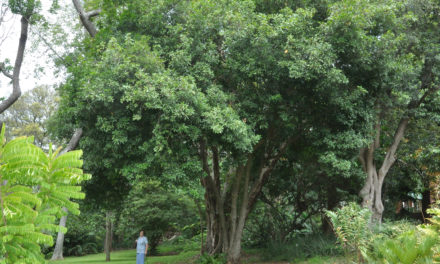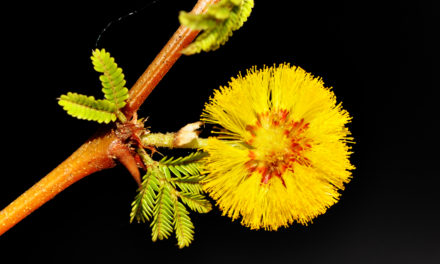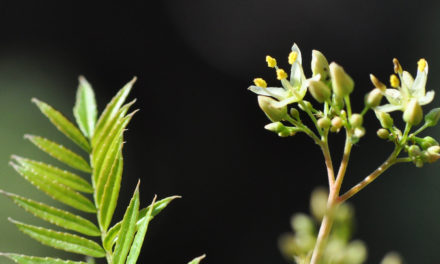Anastrabe integerrima
General Info – summary
This Tree is up to 12m high with a trunk up to 16cm wide. Stiff, opposite, decussate and shiny Leaves are simple, opposite and entire. Interesting, yellow, bisexual zygomorphic Flowers are in cymes. The corolla is 2 lipped and the 4 stamens have didynamous anthers. A staminode replaces the 5th stamen. The superior 2-chambered ovary ends with a simple short stigma. The Fruit is capsule producing spindle shaped seeds.
Description
Previous Names: Anastrabe serrulate.
SA Tree No. 671.
Common names. (Afr) Isipambatiboom, Isipambatihout, Isipambotiboom, Pambatihout, Pambatieboom. (Eng) Pambati-tree. (isiXhosa) Isiphambatho. (isiZulu) Angunyane, Isibhembedu, Isingunjana, Isiphambatho, isibhembedu.
Family Stilbaceae (Family with 6 genera about 14 species). Local genera on this website include Anastrabe, Bowkeria, Halleria, and Nuxia. Members of this family have simple and entire Leaves that lack stipules and have recurved margins. Non-stellate hairs are present. Flowers are bisexual and zygomorphic or regular. The corolla is funnel-shaped and usually 2-lipped. The usually 4 Stamens are epipetalous (born on or arising from the petals) and the usually superior Ovary initially has 2 locules each with 1 ovule. Fruit is usually a dehiscent capsule but may be a berry.
Name derivation: Anastrabe – upwards distorted. This may refer to the larger pair of anthers that curls round the shorter pair. integerrima – completely entire – which probable refers to the leaves.
Conservation: National Status: L C. (Least Concern). Assessment: Raimondo et al. (2009).
Tree
This straight Tree may reach 12m high but is usually a lot shorter. It may also be a multi stemmed shrub or even a scrambler. The Trunk may reach a diameter of 16cm. Bark is light brown or mottled greyish green and young stems are hairy. Lengthwise fissures may develop, and bark may be slightly warty. There are many flattish, leafy Branches that are initially hairy. With time branches become rounded and smooth. Raised white Lenticels (a usually raised corky oval or elongated area on the plant that allows the uncontrolled interchange of gases with the environment) are visible on young stems (photo 612RR).
- 612RR. 2018/01/30. Pretoria NBG. Photo: David Becking.
Leaves
The hard, rigid and lanceolate, oval, oblong or narrowly elliptic Leaves are simple (have a single blade which may have incisions that are not deep enough to divide the leaf into leaflets). The stiff Leaves may be opposite or very nearly so (photo 612) and this helps to distinguish them from Bowkeri, which has leaves arranged in threes. They may also be oblong or lanceolate. In this Pambati-tree, the leaves are also decussate (arranged in pairs, each at right angles to the next pair above or below i.e. rotated 90 degrees along the stem when viewed from above – photo 612RR under Tree). The Margins may be wavy (photo 112) and rolled under (photo 114) and slightly toothed – especially when young, or entire (with a continuous margin, not in any way indented). Leaves of young seedlings may be evenly serrate. Each leaf is slender and up to 11 x 3cm (photo 112). In this photo the Apex is sharply pointed, and the Base is rounded or narrowed. Leaves are a deep glossy green above (photo 612) but lighter and hairy below (photo 112). Yellow tiny, dotted glands may be visible on both surfaces. On the lower surface (photo 112) the hairy raised yellow Midrib and side veins are clearly visible. All Veins become more distinct when examined against a strong light (photo 114). Here the main side veins often split before reaching the margin. Secondary side veins occur between the side veins and are about one third the length of the primary side veins (photo 114). The short Petiole (leaf stalk) is up to 8mm long and grooved on the upper surface (photo 612RR – under Tree). Here it is covered with a thick felt.
- 612. 2018/01/30. Pretoria NBG. Photo: David Becking.
- 112. 2018/01/30. Pretoria NBG. Photo: David Becking.
- 114M. 2018/03/14. Pretoria NBG. Photo: David Becking.
Flowers
The yellow scented Flowers are zygomorphic (irregular flower with the corolla divisible into 2 equal halves in one plane only – making them bilaterally symmetrical). Flower buds have a distinct protruding apex (photo 768). Individual flowers are bisexual and occur ether at branch ends or are in axillary clusters. Each inflorescence is a many flowered Cyme (a broad, more or less flat-topped, determinate flower cluster, with central flowers opening first (photo 768). Each flower is up to 1,5cm long and rest on a short Pedicel (stalk of a single flower – photo 118). Small pairs of bracts (usually a much-reduced specialised leaves, particularly the small scale like leaves in a flower cluster or associated with flowers) are present at each branching of inflorescence and subtend each pedicel (stalk of a single flower). The hairy Calyx (photo 118) is long, and bell shaped with 5 non-overlapping pointed lobes that are as long as the tube. The posterior ones are a little longer (photo 763). The 2-lipped Corolla is also distinctly hairy (photo 768). The upper lip is curved and slightly 3-lobed. (photo 768). This photo shows the lower lip that is partially 2-lobed and inflated forming a pouch. Some distinctive red markings are visible in the flower throat (photo 768). Stamens are didynamous (having 4 stamens disposed in 2 pairs of 2 different lengths – photo 766 – partly dissected). The anterior pair is basally twisted to bring the Anthers to face the front of the flower – above the posterior pair. The 2 theca (each contain 2 microsporangia – pollen sacs) and produce pollen grains. The fifth stamen is a rudimentary staminode (sterile stamen). Stamens do not extend beyond the mouth of the petals (photo 766). The superior, 2-chambered Ovary containing many Ovules and is covered with densely matted woolly hairs. The long slender Style is persistent and ends in a simple Stigma within the flower (photo 768). The flower secrets oil for pollinators. (Nov-May but occasionally beyond this).
- 768. 2018/02/12. Pretoria NBG. Photo: David Becking.
- 118. 2018/03/14. Pretoria NBG. Photo: David Becking.
- 763. 2018/02/12. Pretoria NBG. Photo: David Becking.
- 766. 2018/02/12. Pretoria NBG. Photo: David Becking.
Fruit
The initially green, ovoid Fruit matures into a woody Capsule (a dry fruit resulting from the maturing of a compound ovary which usually opens at maturity by one or more lines of dehiscence). In this plant dehiscence of the dry fruit is triggered by maturing of the compound ovary which usually opens at maturity by one or more lines of dehiscence. This occurs longitudinally along a septum (a partition or wall between 2 tissues or cavities, in the ovary). Here the dehiscence line is between the carpels, (One of the leaflike, seed-bearing structures that makes up the innermost whorl of a flower. One or more carpels make up the pistil). In this plant the carpels are initially surrounded by the persistent Calyx (photo 122). The capsule is up to 8mm long and splits into 2 valves to release the numerous papery, spindle-shaped Seeds. The Testa (seed coat) is reticulate (net-like). (Mar-Jul).
- 122 2018.03.14 Pretoria NBG. Photo: David Becking.
Distribution & Ecology
This plant can be found in the Eastern Cape – from East London to KwaZulu-Natal. It is also found in Eswatini (Swaziland) and possibly Mozambique. It is thus Endemic (Endemism is the ecological state of a species being unique to a defined geographic location) in southern Africa. Plants often grow reasonably close to the coast but may occur up to an altitude of 1 200m. They occur in forests and evergreen forest margins, in dry, rocky hillsides (e.g. sandstone) and along streams. They flourish in both full sun and semi shade are common near Weenen (45km east of Estcourt in KwaZulu-Natal). They grow on the banks of the Bushman River (a tributary of the Tugela River). Established plants are resistant to termites and changing weather conditions.
Ethnobotany
This plant has a non-invasive Root system and can easily be grown from seeds or truncheons (stem cutting from a selected plant – used to produce genetically identical new plants). It responds well to pruning. Plant dry seeds in spring. Plants may be frost sensitive – especially when young. In gardens the plant may reach 5m high and is an impressive addition to a garden. The hard Wood is termite resistant but may warp and split. Local people use it for making household implements like spoons. They are worth growing in a pot or low frost environment area.
References
Boon, R. 2010. Pooley’s Trees of eastern South Africa. Flora and Fauna Publications Trust, Durban.
Coates Palgrave, M. 2002. Keith Coates Palgrave Trees of Southern Africa, edn 3. Struik, Cape Town.
Palmer, E. & Pitman, N. 1972. Trees of southern Africa. Balkema, Amsterdam, Cape Town.
van Wyk, B. & van Wyk, P. 1997 Field guide to Trees of Southern Africa. Struik, Cape Town.
von Staden, L. 2018. Anastrabe integerrima E.Mey. ex Benth. National Assessment: Red List of South African Plants version . Accessed on 2025/02/27.
http://pza.sanbi.org/anastrabe-integerrima
https://en.wikipedia.org/wiki/Anastrabe
http://posa.sanbi.org/flora/browse.php?src=SP
http://www.theplantlist.org/1.1/browse/A/Stilbaceae/
http://pza.sanbi.org/anastrabe-integerrima

